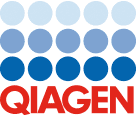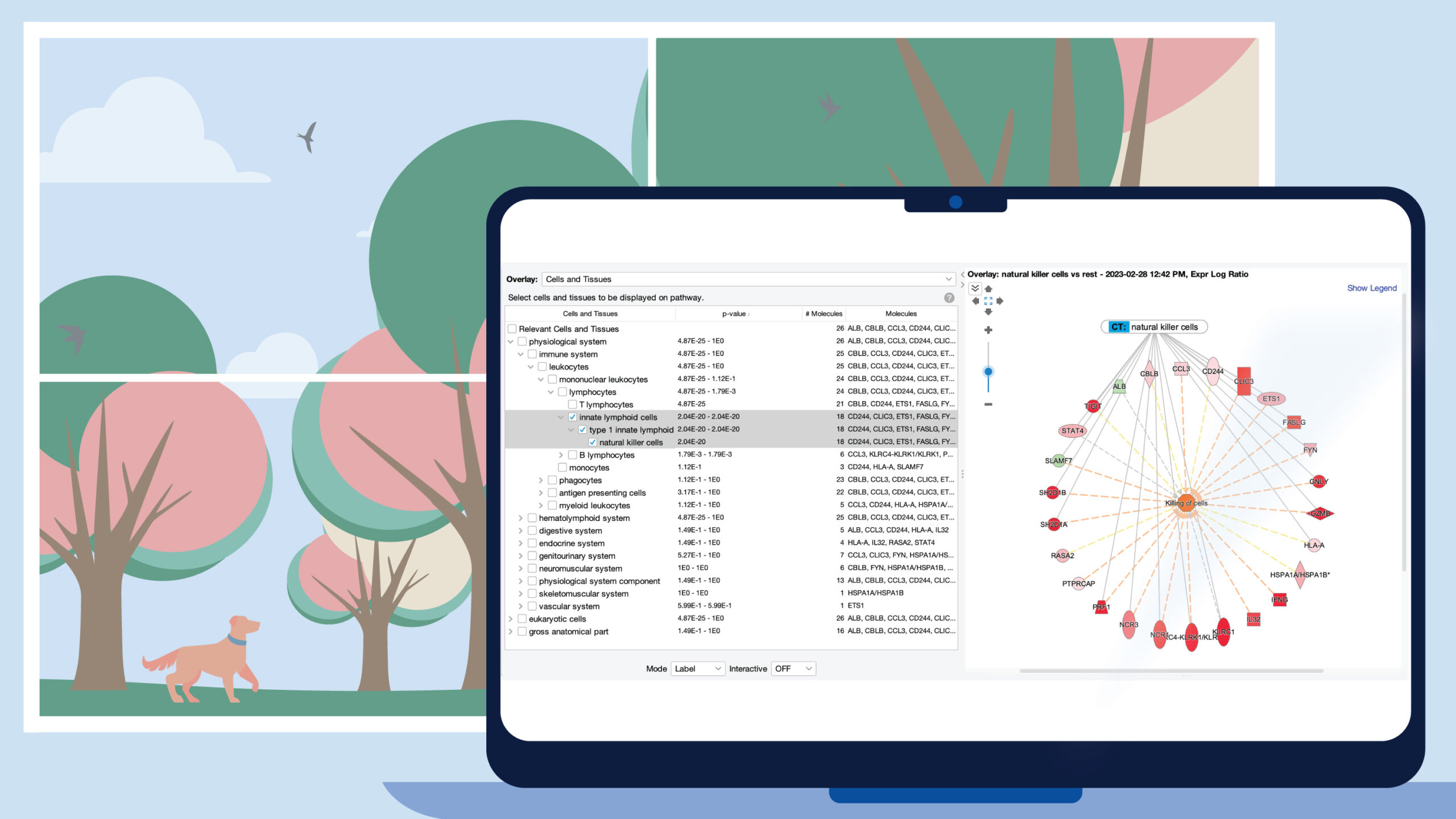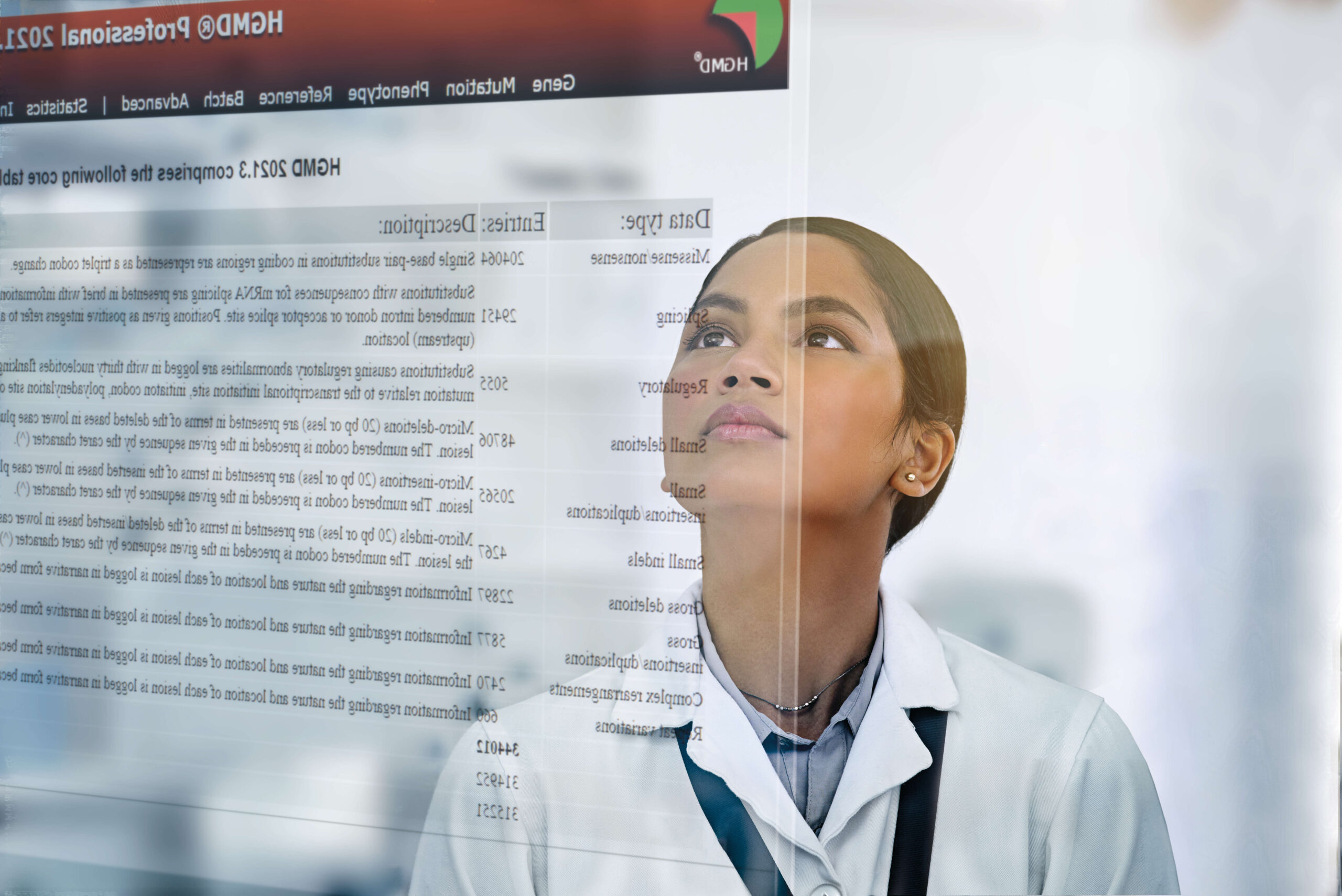Latest improvements for CLC Sequence Viewer
CLC Sequence Viewer 6.8.2
Improvements
- For alignments, sequence lists and other sequence views, the right-click options to Open Copy of Sequence and Open This Sequence have been merged to Open Sequence. If a copy should be created, use Save As with the new sequence, or drag it into a folder in the Navigation Area.
Bug fixes
- Errors related to managing Workspaces have been fixed.
- Annotations were added by the Find Open Reading Frames tool, even though the option to add annotations was not selected. This is now fixed.
- Fixed an out-of-memory problem in the Create Alignment tool.
CLC Sequence Viewer 6.8.1
Improvements
- Added Legal and Tabloid formats for printing
Bug fixes
- Fixed an error when translating DNA to protein. When more than 10 sequences were produced, the resulting protein sequence included X instead of * as stop symbol. We advice customers to re-run any analyses with the translation tool when using more than 10 sequences as input.
- Various minor bug-fixes
CLC Sequence Viewer 6.8
New features
- Toolbox improvements:
- New Favorite Toolbox: A new tab next to the Toolbox holds
- Frequently used tools. This is automatically updated based on which tools are used most frequently.
- Favorite tools: Right-clicking a tool in the Toolbox allows you to add a tool to your favorites list.
- Quick launch of tools: Pressing Ctrl + Shift + T shows a dialog for easy typing and launching tools.
- New Favorite Toolbox: A new tab next to the Toolbox holds
- Relevant view settings are now copied when switching between different views of the same data. As an example: if you have specified a set of restriction enzymes to display in the circular view of a sequence and switch to the linear view, these enzymes will also be listed in the Side Panel here. Note that the Side Panel settings are only copied to the new view if they have been changed by the user in the old view.
- Performance when sorting of large tables has been improved
- Rename can now be done through right-click menu in Navigation Area.
- Annotations on circular sequences:
- When shown in linear view they have a cleaner appearance. Before, there was a line from beginning to end of the annotation, and this has now been removed.
- When shown in circular view, it is no longer displayed as a joined annotation over the start point but as a continuous annotation.
- Alignments: The performance of the algorithm for running multiple alignments has been improved and now runs on multiple cores.
- Find Open Reading Frames can be run in batch and workflows
- Translate to protein can be run in batch and workflows
- Restriction map: Excel export now creates a sheet for both the cut sites table and the restriction map.
- Export now has progress and can be canceled.
- Shortcut key for Translate to Protein has changed from Ctrl + Shift + T into Ctrl + Shift + P.
Bug fixes
- Fixed problem of not correctly formatting qualifiers in EMBL export.
- Fixed a problem sorting sequence lists on modification date.
- Various bug fixes.
CLC Sequence Viewer 6.7.1
Bug fixes
- Various bug fixes
CLC Sequence Viewer 6.7
Improvements
- It is possible to create sequence lists based on other sequence lists (not only single sequences)
- Listing folder elements in the Navigation Area is faster
- Translate to protein creates sequence lists when there are more than ten sequences
- A new translation table added: Pterobranchia mitochondrial (see http://www.ncbi.nlm.nih.gov/Taxonomy/Utils/wprintgc.cgi#SG24)
CLC Sequence Viewer 6.6.2
Improvements
- Aligned fasta import and export is now supported (see http://www.bioperl.org/wiki/FASTA_multiple_alignment_format). A consequence of this is that the standard fasta import of sequences will reject to import sequences that contain gaps, assuming they should be imported as alignments instead.
CLC Sequence Viewer 6.6.1
Improvements
- Translate to protein creates sequence lists as results when more than 10 sequences are produced. This greatly improves performance when translating large amounts of proteins
- It is now possible to specify the number formatting in tables in the View Preferences.
Bug fixes
- Fixed: Downloading of protein sequences from NCBI fails.
- Fixed: Opening external files (e.g. pdf files or Word documents) with spaces in the file name does not work on Windows.
CLC Sequence Viewer 6.5.4
New and improved features
- Exporting fastq format no longer includes redundant name of the read in the quality score line. Now the name only appears once per read.
Bug fixes
- Fixed: Annotations spanning the sequence from start to end did not display right when the sequence was wrapped. The annotation was only displayed on the first line.
CLC Sequence Viewer 6.5.3
New and improved features
- Clean-up of the Workbench window so that it no longer holds information about which Workspace is active. This information is now displayed with check boxes in the Workspace menu.
Bug fixes
- Fixed: For circular molecules, the Find Open Reading Frames tool did not find reading frames on the negative strand. We recommend users to rerun any reading frame analyses on circular molecules.
- Fixed: Certain annotation types were mapped to generic annotation types when exporting sequences in Genbank format.
CLC Sequence Viewer 6.5.1
Bug fixes
- Improved support for Mac OS X systems with japanese language
- Improved support for systems with 512 MB of memory or less
CLC Sequence Viewer 6.5
New features:
- Improved layout of restriction site annotations
- Linear view: There is a new option for displaying labels as “Stacked” which means that the labels of overlapping cut sites can be discriminated. Read more.
- Circular view: There is a “Radial” option that will place restriction sites (and annotations) as close to the sequence as possible with a radial layout. Read more.
- Improved layout of general annotations
- Linear view: There is an option to separate restriction sites and annotations in separate layers.
- Circular view: There is a “Radial” option that will place annotations (and restriction sites) as close to the sequence as possible with a radial layout.
- Annotation table now available for sequence lists and alignments. Read more.
- Support for exporting tables as tab-delimited files.
- Audit option: manual editing of sequences will be recorded with an annotation on the sequence (this has to be switched on in the Preferences dialog). Read more.
- The default database of restriction enzymes can be expanded (requires manual edit of database file). Read more.
- Improved option to export and import Side Panel settings. Read more.
- Memory allocation: the default memory allocation for the Workbench changes from 75% to 50% of available physical memory with a maximum at 50 GB.
Bug fixes
- The molecular weight calculation for the sequence statistics report is more accurate and is now reported for both single- and double-stranded molecules.
- Various bug-fixes
CLC Sequence Viewer 6.4
New features:
- Improved memory management in general: lower memory footprint and shorter management overhead pauses.
- Improved memory handling of large tabular data sets.
- Improved consistency of data handling including faster listing of folder contents
- Performance when saving small files significantly improved
- Sequence annotations are packed to lower memory footprint and disk space usage, especially for SNP, DIP, and Conflict annotations.
- Improved performance of reading data files from shared drives.
- Folder structure (expanded/collapsed folders) is preserved through the life-time of a wizard (e.g. when selecting input data and reference for read mapping)
- Find in Side Panel: separators are allowed when performing position search (e.g. 1.000.000 or 1,000,000 or 1’000’000 or 1 000 000). Read more
Bug-fixes:
- Print of folder content now takes settings in the Side Panel into account
- Find in Side Panel: space are now allowed
- Genbank import: sequence name (LOCUS) was truncated to 18 characters
CLC Sequence Viewer 6.3
New features
- Deployment
- You can set a path to the default data location used when the Workbench starts for the first time. This is a feature to help system administrators control where new installations per default save their data. Read more…
- Support for removing tools accessing the internet (NCBI search, update notifications etc). Read more…
- General import and export
- Export tables and reports in Excel format.
- Import section of user manual re-structured to provide better overview. Read more…. Expression data importers are now described in technical details in a separate section. Read more….
- You can now export multiple sequence lists in fasta format
- Forced import of zip files is now supported (it will force import the contents of the zip file)
- The standard import now accepts gzip and tar files as well as zip
- If a forced import fails, there will be more technical information about what went wrong, allowing you to identify bad formatting of the import files
- Both Genbank and gff importer now makes several attempts at naming genes that do not have a gene name. It will iteratively try the following qualifiers: “product”, “locus_tag”, “protein_id” and “transcript_id”
- When importing genbank files where the length stated does not match the actual sequence, a warning is shown but the sequence is accepted.
- When exporting in csv format, the Locale settings are used to determine whether comma or semi-colons should be used as delimiter (comma used for US locales)
- Miscellaneous
- Improved reporting of situations when a full disk prevents saving of data
- Downloading sequences using drag and drop from the search table no longer creates a “Downloading…” node in the folder. The download process can be monitored in the Processes tab.
- Extract Sequences moved from File menu to Toolbox-> General Sequence Analysis. Read more…
- Better progress feedback on various dialogs
Bug-fixes:
- Fixed problem displaying the “Copying…” label when copying data and then updating the folder
- Fixed problem with naming of tabs. The fix means that on Windows and Linux unsaved data now gets a * rather than make the tab name bold and italics. (This has always been the behavior on Mac OS X).
CLC Sequence Viewer 6.2.0
New features:
- Import list of sequences in csv format: each line in the file represents a sequence with name, optional description, and sequence. Typically useful for importing lists of oligos.
- Advanced view of elements in a folder including batch editing.
- Extract sequences improvements
- You can now drag results from NCBI searches into the view area to open directly (previously you could only drag into a folder to save)
- “Find” in text view now accepts Enter as command to find the next hit
- Importing VectorNTI archives previously resulted in a sequence list. Now it imports as single sequences.
- Export of annotations in GFF format (note that annotations with joined regions are not supported)
Bug fixes:
- Problem rendering scatter plots without lines
- DNA strider files could loose name upon import
- Rare misplacement of annotations when editing very large sequences
- Various bug-fixes
This update is recommended for all users.
CLC Sequence Viewer 6.1
June 2, 2009
New features:
- Better feedback on processes: there is a tool tip showing details and start time.
- Much improved memory performance and processing time of large data sets
- Output and error log files are now placed in the application data directory in the user home
Bug fixes:
- Fixed error when parsing files from Clone Manager (cm5-files)
CLC Sequence Viewer 6.0.2
Updates
- Better performance of files with many annotations
- Fixed error and improved performance of Join Sequences tool
- Various bug fixes
CLC Sequence Viewer 6.0.1
Bug fixes
- Find in the Side Panel did not support spaces when searching for annotations
- Fixed error when exporting alignments in aln format
CLC Sequence Viewer 6.0
Improved user experience of processes
- Non-modal feedback from processes:
- When there is a message
- If you have chosen to save the results in the last step of the wizard, you will be notified when the process is done.
- Processes running on the CLC Science Server will notify when they are done.
- Possibility to open results by clicking the button next to the process
- Possibility to find and select results in the Navigation Area by clicking the button next to the process
- You can see a log of your process by clicking the button next to the process (even if you did not choose to see the log in the last step of the wizard)
General improvements
- Tables:
- New advanced filter to use numerical data for filtering and to combined several filter criteria. Click the small button next to the normal filter to see the advanced filter.
- Visual feedback when sorting and filtering tables
- Improved automatic detection of column width
- Performance of graphs and plots improved
- More elaborate error reports including error logs
- You can specify which folder the Workbench should use for temporary files
- Extract sequences from a sequence list, contig or alignment by right-clicking the white empty space. You will then be able to extract the sequences into a list or as separate sequences.
- The “Find” option in the Side Panel of sequence views automatically detects if you have entered a position instead of a sequence.
Bug fixes
- Locale settings were not automatically set right on the first start-up. The locale settings determine whether . or , should be used for before decimals. For new installations of the Workbench, it will now be set to the locale of the computer’s operating system. For existing installations, you will have to change this in the Edit->Preferences dialog.
- Various performance improvements and bug fixes
CLC Sequence Viewer 5.1.2
The following has been updated:
- The Side Panel’s Find only high-lighted the first hit. This is now fixed.
- Better performance when zooming a dot plot
- Better performance when using the Side Panel’s Find in large contigs and sequence lists
- Multi-select (using Ctrl / Command key) did not work for sequence lists
- Various bug fixes
CLC Sequence Viewer 4.6.1
The following has been updated:
- CLC Free Workbench is now called CLC Sequence Viewer.
- Various bug-fixes
- Fixed copy/paste errors in sequence list table
- Made it possible to Ctrl-doubleclick to extend selection between restriction sites
CLC Free Workbench 4.6
Release date: February 6, 2008
The following has been updated:
- Restriction sites available in Side Panel are computed up to 6 times faster
- Better focus system – it is now easier to see what part of the screen that has focus. An error in the focus system has also been corrected.
- Various bug fixes.
CLC Free Workbench 4.5.1
Release date: December 18, 2007
The following has been updated:
- Organism name is now available in sequence list tables
- Fixed Mac problem when closing tabs
- Fixed minor issues and improved overall program stability
- Improved view layout of very long sequence labels
- Fixed stability issues related to the Recent Items plugin
CLC Free Workbench 4.5
Release date: December 06, 2007
Framework
- New and improved plug-in and resource management
- New user interface
- Quick button in toolbar
- Better progress measurement during download, installation etc.
- Automatic update check
- Automatic restart (after plug-in installation, exceeding of memory capacity and license changes)
Views
- Copying work better in both sequence viewers and tables (no need to right-click any more)
- Position of annotations in alignments etc. now relative to both alignment and sequence
- Selecting a row in a table makes an interactive selection on the corresponding sequence (now implemented for all relevant tables)
- The Find functionality in the Side Panel has been improved to make it possible to search in sequences with ambiguity character e.g. Ns
- It is possible to open much larger sequence lists in the graphical view.
Restriction sites
- Side Panel re-design
- Sorting of enzymes by alphabet, number of cuts or overhang type
- Simpler management of enzymes
- Improved tool tips on side panel enzymes showing recognition sequence and cleavage pattern
- Quickjump to restriction sites
- Improved enzyme selection wizard
- Tool tips on restriction sites now include:
- Methylation inhibition
- Possible star activity (non-specific recognition and cleavage)
- Enzyme list table:
- Information about possible star activity (non-specific recognition and cleavage)
- New button: Add/Remove Enzymes
- New button: Create new enzyme list from selection
Miscellaneous
- Shuffle sequence includes more algorithms – now possible to shuffle while preserving di-nucleotide frequency
- Added codon frequency tables for: *Arthrobacter aurescens TC1 *Streptomyces coelicolor A3(2)
- Finding open reading frames: the table includes more information:
- Strandedness
- Nucleotides in the start codon
- It is now possible to extract all sequences from a sequence list, an alignment or a contig (File->Extract Sequences)
- Creating phylogenetic trees is done 10 times faster that before
- Creating pairwise comparison tables is done 10 times faster that before
Plug-ins
- Sequence reader – reads sequence aloud
- Recent items – show updated list of recently used data
- VNTI import – including import of VNTI archives
Example data
- Example data is included in the installation file – no need for download
- Large vector library included
- New RNA sequences
CLC Free Workbench 4.0.3
Release date: October 04, 2007
The following has been updated
- Better import of aln files
- Solved problem with annotation rendering when inserting long sequences
- Annotation labels are now appended when exporting into GenBank format
CLC Free Workbench 4.0.2
Release date: August 22, 2007
The following has been updated:
- A few help updates
- Better detection of memory on computers with more than 2 GB RAM
- Better license handling on Windows Vista
- Fixed error in alignment editing
- Improved program stability
- Improved ORF detection on negative strands of circular molecules
- Better file naming when importing raw sequence data
CLC Free Workbench 4.0.1
Release date: July 5, 2007
The following has been updated
- Fixed error in conversion of old sequence data with lowercase characters
- Old data can now be converted through the help menu
- Fixed error when trying to save an element to non-selected location
- A few help updates
- Better license handling on Windows Vista
- Fixed error in alignment editing
CLC Free Workbench 4.0
Release date: June 28, 2007
The following has been updated
- Highlights
- Full support for Windows Vista
- One-click switch between views (e.g. circular and linear sequences views)
- New annotation table – easy overview and filtering of annotations
- State-of-the-art layout of annotations
- Better and more intuitive handling of files (you can now access the files directly on the file system)
- It is now possible to “Save as”
- Easily expand selections using the mouse
- Improvements of restriction site analysis
- All the details
- General use
- One-click switch between views (e.g. circular and linear sequences views). There is a new row of buttons at the bottom of each view which you can click to switch the view. Pressing Ctrl (Command on Mac) while clicking creates a split view of the two.
- Pressing Ctrl (Command on Mac) while rolling the scroll wheel of the mouse can now be used to zoom in and out (only possible for mice with scroll wheels).
- Many right-click menu items have now icons to make it easier to navigate the menus.
- Simplifying the task of creating a new sequence. Rarely-used elements like “Keywords” and “Comments” have been removed from the dialog, and the two steps have been merged into one.
- You can now use I (inosine) in nucleotide sequences.
- Better choices for the resolution of exported graphics.
- Sequence views
- Easily expand selections using the mouse. When you have made a selection, place the mouse cursor on the edge of the selection, and you can now adjust the selection. This is also possible for each part of a multiselection.
- Quick-jump to annotations. In the Side Panel under “Annotation types”, it is now possible to click a quick-jump button which lets you go directly to the annotation. This provides a very quick and easy way of browsing annotations.
- The names of annotations are now repeated on each new line in a wrapped sequence view.
- The user can now specify which symbol to use in an alignment consensus sequence in case of ambiguities.
- In nucleotide sequence views, you can introduce a space for every three characters to visualize codons. In the Side Panel under “Sequence layout” there are now several options for “Spacing”: Every 10 residues, every 3 residues in three reading frames.
- It is possible to search in text views. In the Side Panel, there now is a “Find” group where you can enter a text to search for.
- You can now hide labels in sequence views. This is particularly convenient with long sequence names taking up a lot of space.
- Import and export
- Pasting simple sequence text (like ATCGTACGTA) in the Navigation Area automatically creates a new sequence.
- Import and export of view settings (the settings saved in the Side Panel). In the Preferences dialog (available from the Edit menu), in the “View preferences” you can now export and import the View settings.
- All tables can be exported in a CSV format (semicolon-separated). When exporting sequences in this format, the annotations are exported.
- Restriction site analysis
- “Restriction Sites Analysis” has been renamed to “Create Restriction Map” and the dialogs are more intuitive to use.
- It is now possible to filter the list of enzymes to easily pick a specific enzyme.
- It is easier to set the number of cut sites for the restriction enzymes to be displayed
- When you open an enzyme list, you can select a number of enzymes, right-click and “Create New Enzyme List from Selection”. This makes it easy to create subsets of enzyme lists. Combined with the table’s filter, this makes it easy to extract e.g. restriction enzymes from a specific vendor.
- Data handling
- Copy an element in the Navigation Area by dragging while pressing the Ctrl button (Command button on Mac)
- Filter elements in the Navigation Area (to show e.g. only nucleotide sequences). The filter is available from the small tool bar above the Navigation Area.
- When selecting elements for analysis, only the relevant elements are shown (e.g. only nucleotide sequences are visible when selecting sequences for Restriction Site Analysis).
- When selecting elements for analyzes (in the select elements dialog), you can right-click a folder and add all the elements in that folder.
- Possible to sort elements alphabetically
- One-click renaming of elements. Simply click an element which is already selected, and you can type a new name directly.
- Recycle bin is now visible and you can easily restore deleted elements simply by dragging to the desired folder.
- In the File menu, there is a “Save As” menu item. It saves the opened element under a new name.
- Easily collapse all folders in the Navigation Area by clicking the “Collapse All” icon in the small tool bar above the Navigation Area.
- Plug-ins and licenses
- Plug-ins are now installed for all users of a computer.
- Licenses also apply to all users of the computer.
- General use
CLC Free Workbench 3.2.4
Release date: May 30, 2007
The following has been updated
- Import of VectorNTI database significantly improved
CLC Free Workbench 3.2.3
Release date: April 24, 2007
The following has been updated
- Better support for Windows Vista
- Improved import of Swiss-Prot files
- User can now select DNA or Protein sequence for Fasta import
CLC Free Workbench 3.2.2
Release date: March 08, 2007
The following has been updated
- Improved import of GCG files
- Improved import of BLAST alias files
- Workbench starts correctly on AMD64 linux distributions
- Fixed error when upgrading preference settings
- Fixed focus problem preventing interaction with Side panel
CLC Free Workbench 3.2.1
Release date: January 30, 2007
The following has been updated
- Fixed error in the bugsubmission dialog when it was invoked by a workbench crash
- Fixed error in the preference panel when using empty BLAST url
CLC Free Workbench 3.2
Release date: December 18, 2006
The following has been updated
- Possible to install and use plug-ins
- Possible to develop your own plug-ins using our Software Developer Kit
- Various bugfixes
CLC Free Workbench 3.1
Release date: November 29, 2006
The following has been updated
- Greatly improved data import: Manual work is reduced significantly when importing large amounts of data; e.g, when shifting from old software to CLC-software
- Much better handling of very large sequences: Much less memory use makes the application smoother to work with
- Significantly better data handling makes actions like deletion of files and working with many files at a time much faster
- Inclusion of pre-defined style sheets for the preference panel
- Greatly improved export of graphics
- Greatly improved printing
- Greatly improved file handling (faster etc.)
- Greatly improved save-function. Among others the option of creating new folders from the save dialog
- Tables are now searchable
- All output of analyses can now be shown in table
CLC Free Workbench 3.0.3
Release date: November 7, 2006
The following has been updated
- Swiss-Prot parser can now download and handle files from the UniProt (9.0) release (updated file format)
- Swiss-Prot parser again handles multi-entry Swiss-Prot files
- Fixed error dialog on exit of the workbench if an external file is deleted while kept open in another program
CLC Free Workbench 3.0.2
Release date: August 2, 2006
The following has been updated
- Fixed rare cases where doubleclicking annotations in an alignment resulted in a wrong selection
CLC Free Workbench 3.0.1
Release date: July 18, 2006
These improvements and changes have been implemented in CLC Free Workbench
- Nexus parser fully functional
- Bootstrap values visible bug fixed
- Alignment gap-cost overflow management
- Cut/delete in navigator improved
- Even more user-friendly import-dialog
- Atom-count in sequence statistics bug fixed
- Attempting to drag more than 100 sequences no longer opens viewers
- Improved import of nucleotides from Vector NTI
- Import of oligos from Vector NTI
CLC Free Workbench 3.0
Release date: July 6, 2006
These improvements and changes have been implemented in CLC Free Workbench
- All icons have been updated in order to support a more modern and platform-independent look
- An analysis can be started by dragging a sequence to the icon in the toolbox
- Batch runs of analyses: Multiple sequences can now be analyzed in one single work step in order to improve speed of work. Examples of analyses are DNA to Protein translation, DNA to RNA transcription, and Reverse Complement etc.
- The restriction site analysis tools have been improved, making them more interactive and easy to work with
- DNA, RNA, and protein sequences can now be edited
- Two or more sequences can now be joined into one
- The program now includes advanced alignment editing such as insertions of gaps, deletions of columns, changing of residues etc.
- Two or more alignments can now be joined into one
- The history log has been improved, giving an even better overview of past work tasks performed on a given element (an alignment, a sequence etc.)
- In order to give a better overview of sequences, they are now wrapped to fit the screen as default when they are opened.
- A large number of tool tips have been added
- All analyses have now an initial pre-defined setting of parameters. These parameters can be restored at the user’s choice
- Position specific information (e.g. the conservation score on an alignment) on sequences and graphs is now available by pointing to or selecting a position.
- DNA Strider data and PIR data can now also be exported (earlier only import was available)
- Import/export of NEXUS data
- Import of sequences in Staden format
These errors and problems have been fixed in CLC Free Workbench
- The functionality of moving sequences up and down in alignments has been re-introduced.
CLC Free Workbench 2.5.2
Release date: April 19, 2006
These improvements and changes have been made to CLC Free Workbench and all other Workbenches
- The phylogenetic tree function has been improved: The number of replicates (the bootstrap value) is no longer fixed at 100. Any value can now be chosen.
- It is now possible to cancel the process when exporting views to graphics file formats such as .jpg, .pdf, and .svg etc.
- It is now possible to cancel “license upgrade” from within the program (Help menu)
- When sequences are opened, they are now zoomed to nucleotide level per default. The prior default setting was “fit to width”.
These errors and problems have been fixed in CLC Free Workbench and all other Workbenches
- Restriction site analysis: In some situations, updating from an older version of CLC Free Workbench to CLC Gene Workbench, CLC Combined Workbench, or CLC Free Workbench 2.5 or 2.5.1, resulted in the program freezing when selecting restriction enzymes. This problem has been fixed.
- Export of GenBank search parameters did not always work perfectly. This is now fixed.
- Running different types of CLC Workbenches right after each other could result in errors in some situations. This is now fixed.
- The user is now told if no hits were found in a database search – e.g. a GenBank search.
- Help-description in the programs: Users having an older version of JavaHelp installed than JavaHelp 2.0 did sometimes experience missing or in-optimal help-texts. This is now fixed.
- In a few situations, import of ABI files was not done correctly. This is now fixed.
- In some situations, resizing of the application changed the toolbar layout. This is now fixed.
- Naming a workspace with the same name as an existing workspace can now be done without problems.
CLC Free Workbench 2.5
Release date: March 15, 2006
A number of features have been added and improved in CLC Free Workbench 2.5. Some are
- Circular sequence viewer, fully integrated with the linear sequence viewer
- Improved GenBank searches, making it much easier to perform consecutive searches
- Improved restriction site analysis:
- More information about restriction enzymes is included
- Option of creating user-defined restriction enzyme lists
- The preference panel is now detachable and movable, resulting in a larger sequence-view if preferred
- User settings of preference panel can now be saved and reused on other views
- Improved History log viewer: Improved user interface and improved navigation
- Improved Sequence info viewer: Improved navigation in Annotation Map
- Import of Lasergene sequence data
- Improved user-friendliness through easier closing of multiple tabs/views at a time
CLC Free Workbench 2.2
Release date: February 8, 2006
A number of improvements and new features have been added in CLC Free Workbench 2.2:
Alignments:
- The alignment algorithm has been rewritten and is now often 10 times faster than the earlier algorithm.
- An additional alignment algorithm has been included. This algorithm is even faster but less precise than the new standard alignment algorithm.
Print and Graphics export:
- The graphics printing and export of graphics to PDF have been improved significantly:
- Much larger graphics areas than before can be printed/exported
- You can choose the size of the print/export as you like (e.g. 2 x 2 pages or 10 x 1 pages)
Translation and data management:
- The option of translating from DNA to RNA and from RNA to DNA has been added
- When importing a file including a number of sequences, you can now choose between importing as a sequence list and importing each sequence separately into the navigation area.
- You can now choose to split/extract the sequences from sequence list into separate sequences
- You can now import CLUSTAL W (.aln) files, CGC/sequence (.msf) files, and DNA-strider files.
Other improvements:
- The comparative sequence statistics can now include as many sequence comparisons as you like, without squeezing the table texts on the screen and in the print-out.
- The sequence statistics now include a full overview of
- the types of annotations on the sequence, and
- the total number of each type of annotation on the sequence
CLC Free Workbench 2.1
Release date: December 23, 2005
Based on user feedback received, a number of minor errors and a few major errors have been fixed. This has improved the program significantly on both Windows, Mac OS X, and Linux platforms.
In addition, these improvements and new features have been implemented:
- The performance of the alignment algorithm has been improved significantly, speeding up the calculations significantly
- The memory usage have been reduced in a number of processes, improving the performance in general
- Consensus sequences can now be copied and/or opened in a new view
- History logs can be printed and exported to PDF format
- It is now possible to export and import a given object (e.g. an alignment) and all its source objects (e.g. the individual sequences) in one single step
- The settings of a given view can be saved as the default settings of that view, reducing the work with defining the settings next time the view is opened
- A quick-start menu has been added, making data import, typing in of sequences, and the access to tutorials available directly from the workspace
- All tabs in the view area can now be closed in one single step
- The layout of the sequence statistics has been improved
- The printing and graphics export options have been improved, including layout improvements
Be aware that data generated in CLC Free Workbench 2.1 can not be successfully imported into CLC Free Workbench release 1.01 or earlier. Data generated in earlier versiones of CLC Free Workbench is however fully importable to CLC Free Workbench 2.1.
Therefore we recommend you to upgrade to CLC Free Workbench 2.1 as soon as possible – especially if you are sharing your bioinformatics files with anybody else. Launching CLC Free Workbench 2.1 will automatically convert your old bioinformatics data to the new format.
CLC Free Workbench 2.0
Release date: November 10, 2005
A number of new features have been added in CLC Free Workbench 2.0:
- Improved project management. All types of files can be saved in local projects and launched from the program
- Detailed history log
- Improved performance when viewing long sequences and large alignments
- User-defined choice of start codons when making Open Reading Frame analyses
- Text-based sequence info view
- Consensus sequence determination
- Conservation score along alignments
- Improved user options in sequence view
- Improved user options in alignment view
- Option of viewing and graphical manupulation of analyses made in CLC Protein Workbench
- Option of viewing all types of protein reports and protein statistics made in CLC Protein Workbench
- Import/export of SwissProt/UniProt-files, PIR-files, and EMBL files
- Import of Vector NTi Protein and Nucleotide database
- REBASE and the genetic translation tables are updated
- Option of sorting files according to a number of parameters
CLC Free Workbench 1.01
Release date: September 21, 2005
In response to user feedback received, we have included some minor program corrections to CLC Free Workbench 2.0. In addition, we have implemented these novel new features:
- Restriction enzyme analysis: When viewing restriction sites, flags are now labelled with enzyme name.
- The program now supports internet communication through http proxy servers and anonymous SOCKS proxy servers.
- It is now possible to import and export text files.
- Users receive a warning if trying to import data from a newer version of the program into an older version. The user is recommended to update the program to a newer version.
- When updating to a newer program version, the old user settings will be reset. This inappropriateness will be removed at the major release of CLC Free Workbench which will be made in March 2006.
- When starting up a CLC Free Workbench for the first time, users are asked if they want to import CLC bio’s sample data set (only relevant to people who have not used CLC Free Workbench before).
CLC Free Workbench 1.0
Release date: August 24, 2005
Some of the new features in CLC Free Workbench 1.0 are:
- The program now includes restriction site analysis and visualization of restriction sites.
All restriction enzymes from REBASE are included in the program. - Improved genetic translation: All genetic translation tables are now available. Translation tables are selected by the user as needed. The translation tables can be seen in table format in the menu item “Help / Background information”.
- Improved distribution of CPU power for the Windows version.
The user interface is now much smoother to work with when making heavy calculations in the background. - Massive reduction in memory usage when working with large DNA sequences.
- Improved printing options.
- Improved export and import options when working with files in Newick format.
- The program now makes an automatic check for new updates when you start it up.
(only a new feature for 0.9beta users)






























